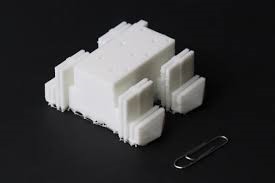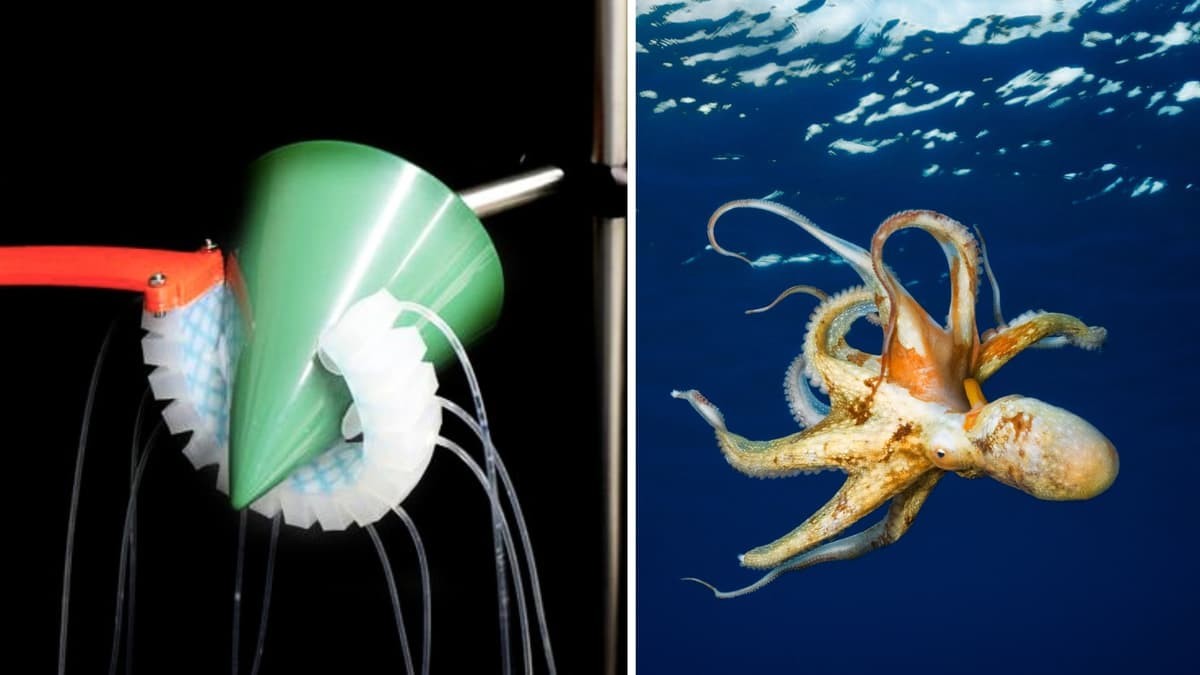U.S. Student Develops Sound-Driven Metamaterial to Enable Remote Control of Underwater Robots
Sound waves are more than just carriers of music and speech—they’re powerful tools in science and engineering. From mapping the ocean floor and detecting earthquakes to steering submarines and breaking up kidney stones, their ability to travel through various materials and exert force makes them invaluable.

Figure 1.A Metamaterial Device Lies Underwater, Used to Demonstrate Sound-Based Manipulation.
Now, researchers are pushing the boundaries of what sound can do. Figure 1 shows A Metamaterial Device Lies Underwater, Used to Demonstrate Sound-Based Manipulation.
Dajun Zhang, a Ph.D. student at the University of Wisconsin-Madison, has created a novel metamaterial that enables the remote manipulation of underwater objects using sound waves alone—no physical contact or mechanical tools required.
A Sawtooth Design with Powerful Potential
At the core of Zhang’s innovation is a carefully designed sawtooth-patterned metamaterial. When multiple speakers emit sound waves from different angles, this structure alters the reflection patterns, allowing precise control over movement.
“By accurately directing sound waves at the metamaterial, I can push and rotate attached objects exactly as desired,” Zhang explained.
This acoustic steering ability could revolutionize underwater robotics and offer new tools for non-invasive medical procedures.
Applications from the Ocean to the Operating Room
Zhang sees wide-ranging possibilities for his technology—from assembling underwater structures and navigating robotic vehicles to delivering medication deep within the body.
“Our metamaterial allows for applying varied acoustic radiation forces to objects in liquids, whether they’re robots, assembly components, or medical devices,” he said.
Because it operates without physical contact, the method also reduces the risk of damage or contamination in sensitive environments.
Solving the Fabrication Puzzle
Designing such a precise and effective metamaterial wasn’t easy. Conventional manufacturing techniques lack the necessary resolution and are often prohibitively expensive.“Existing methods don’t meet the performance or affordability requirements for underwater metamaterials,” Zhang noted.
To overcome this, he developed a new, cost-effective approach that offers high-resolution production and strong acoustic contrast with water—both critical features for effective underwater functionality.
“This technique delivers high fabrication precision and a large acoustic impedance difference with water, all at a low cost,” he added. Sound waves are more than just carriers of music and speech—they’re powerful tools in science and engineering. From mapping the ocean floor and detecting earthquakes to steering submarines and breaking up kidney stones, their ability to travel through various materials and exert force makes them invaluable.
Now, researchers are pushing the boundaries of what sound can do. Dajun Zhang, a Ph.D. student at the University of Wisconsin-Madison, has created a novel metamaterial that enables the remote manipulation of underwater objects using sound waves alone—no physical contact or mechanical tools required.
A Sawtooth Design with Powerful Potential
At the core of Zhang’s innovation is a carefully designed sawtooth-patterned metamaterial [1]. When multiple speakers emit sound waves from different angles, this structure alters the reflection patterns, allowing precise control over movement.
“By accurately directing sound waves at the metamaterial, I can push and rotate attached objects exactly as desired,” Zhang explained. This acoustic steering ability could revolutionize underwater robotics and offer new tools for non-invasive medical procedures.
Applications from the Ocean to the Operating Room
Zhang sees wide-ranging possibilities for his technology—from assembling underwater structures and navigating robotic vehicles to delivering medication deep within the body.
“Our metamaterial allows for applying varied acoustic radiation forces to objects in liquids, whether they’re robots, assembly components, or medical devices,” he said.
Because it operates without physical contact, the method also reduces the risk of damage or contamination in sensitive environments.
Solving the Fabrication Puzzle
Designing such a precise and effective metamaterial wasn’t easy. Conventional manufacturing techniques lack the necessary resolution and are often prohibitively expensive.“Existing methods don’t meet the performance or affordability requirements for underwater metamaterials,” Zhang noted.
To overcome this, he developed a new, cost-effective approach that offers high-resolution production and strong acoustic contrast with water—both critical features for effective underwater functionality. “This technique delivers high fabrication precision and a large acoustic impedance difference with water, all at a low cost,” he added.
Reference
- https://interestingengineering.com/innovation/us-student-underwater-metamaterial-sound-waves
Cite this article:
Keerthana S (2025), U.S. Student Develops Sound-Driven Metamaterial to Enable Remote Control of Underwater Robot, AnaTechMaz, pp.194















